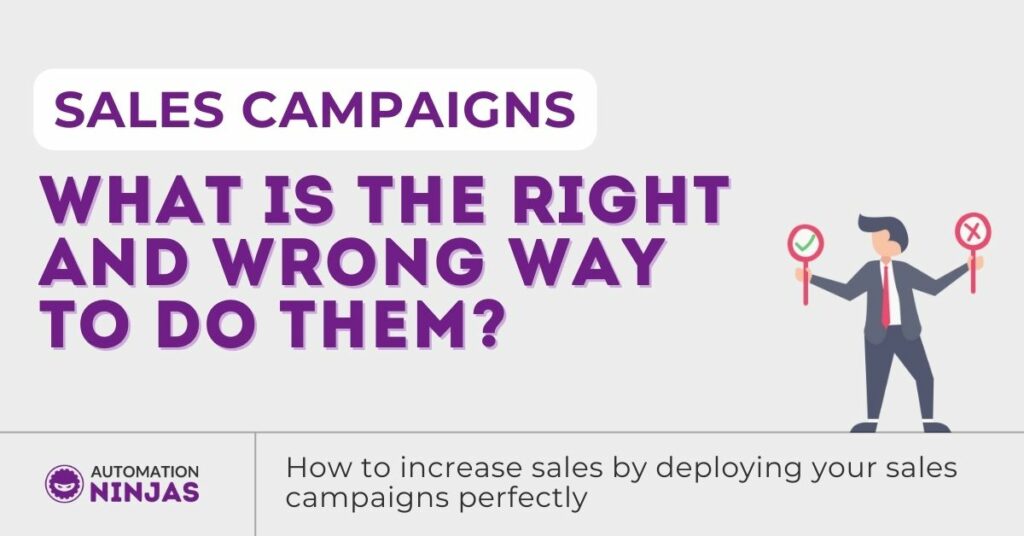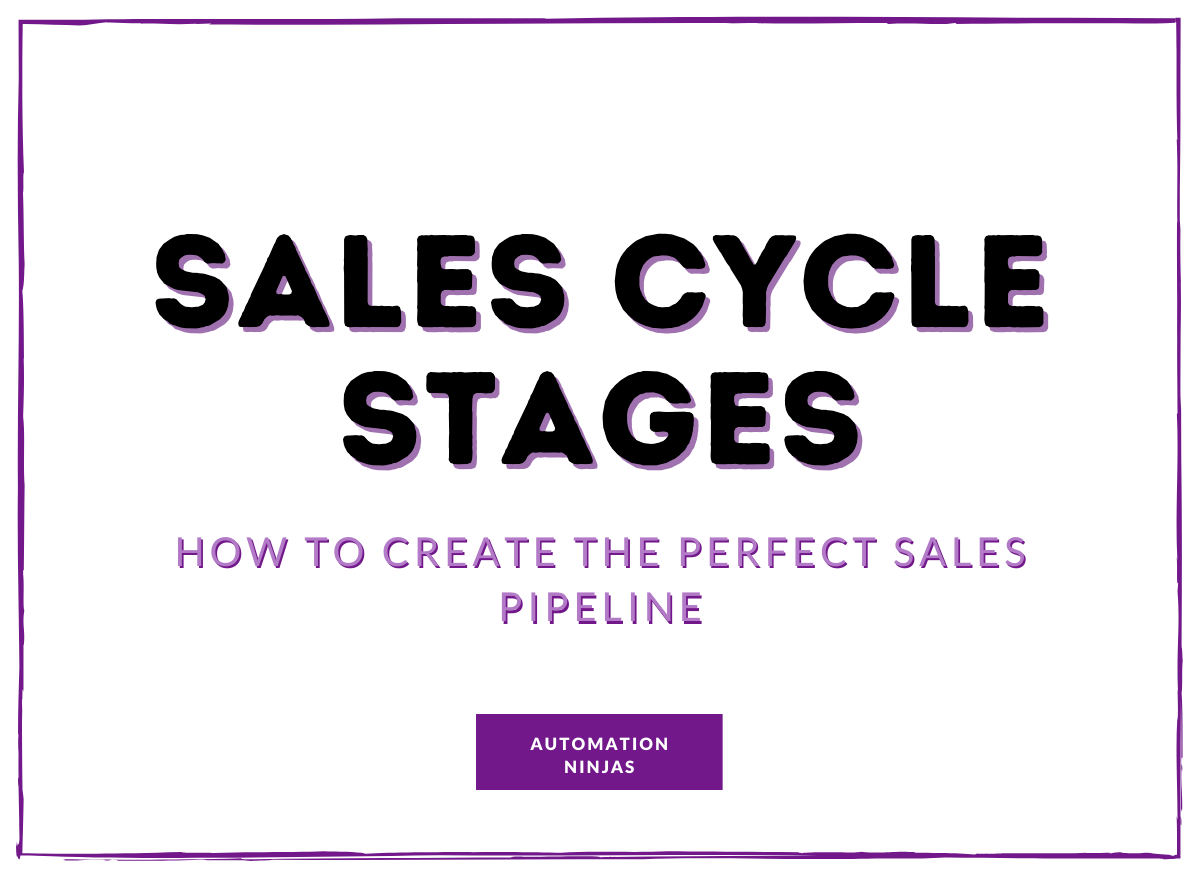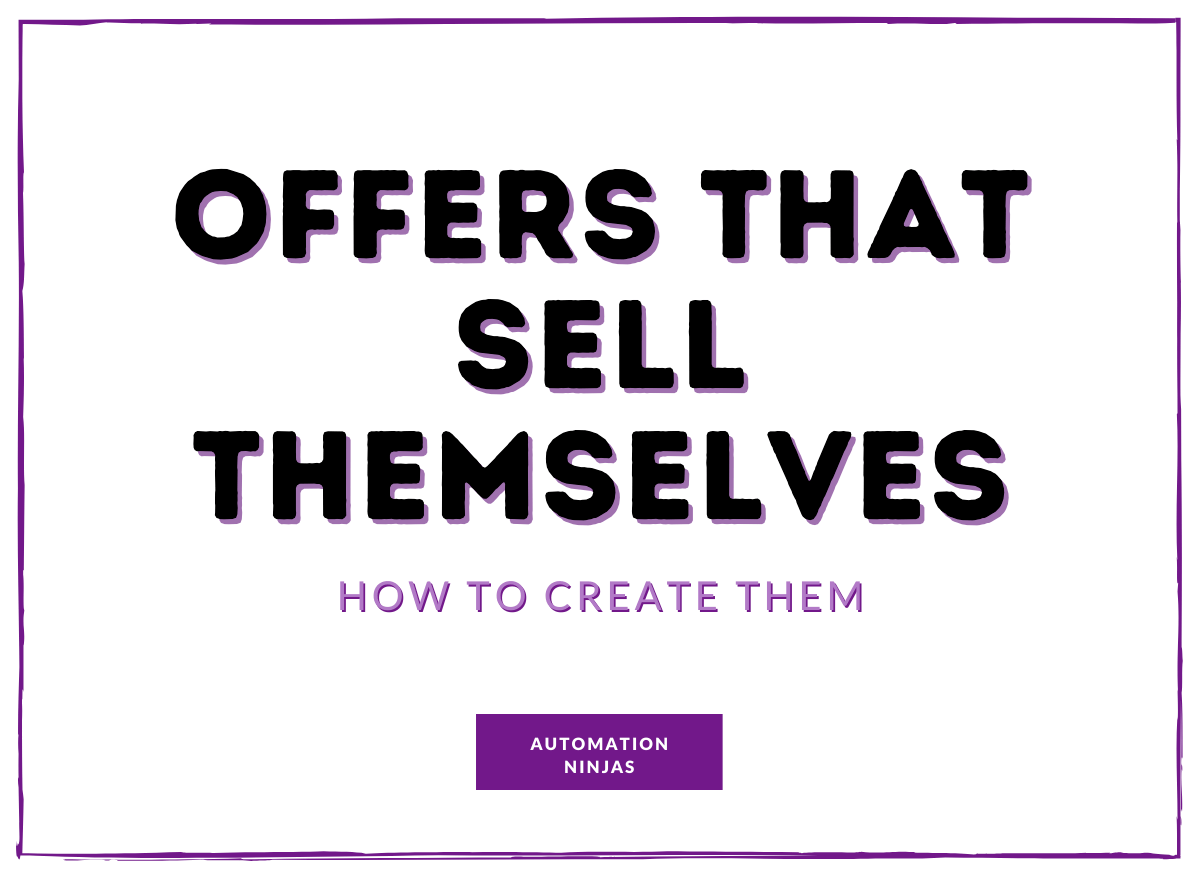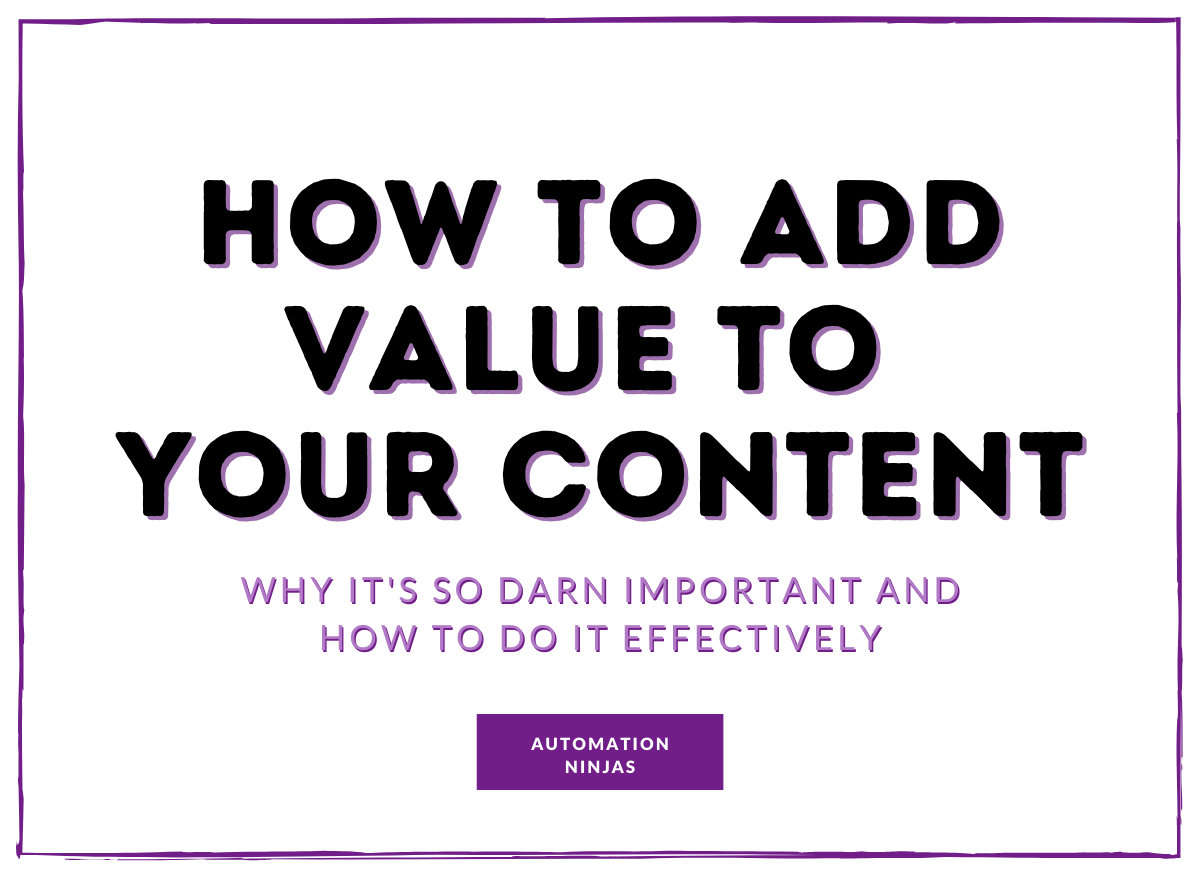Are you struggling to get your sales campaigns right?
A sales campaign is essentially a planned sales strategy that aims to convert leads into customers. It can use multiple channels, however, when we talk about it, it is of course in relation to automated emails.
They do what they say on the tin and sell, and they come after the attract and engage part of the customer lifecycle.
Sales campaigns can be extremely successful for driving sales. However good campaigns are goal orientated and implemented at the right time - and they aren’t always easy to get right.
In this blog, we’re going to explore sales campaigns, and the right and wrong way to do them.
What are people getting wrong about their sales campaigns?
No one likes getting their mistakes pointed out. But we want to make sure that you are doing everything as well as you possibly can.
There are four main things that people usually get wrong when it comes to sales campaigns:
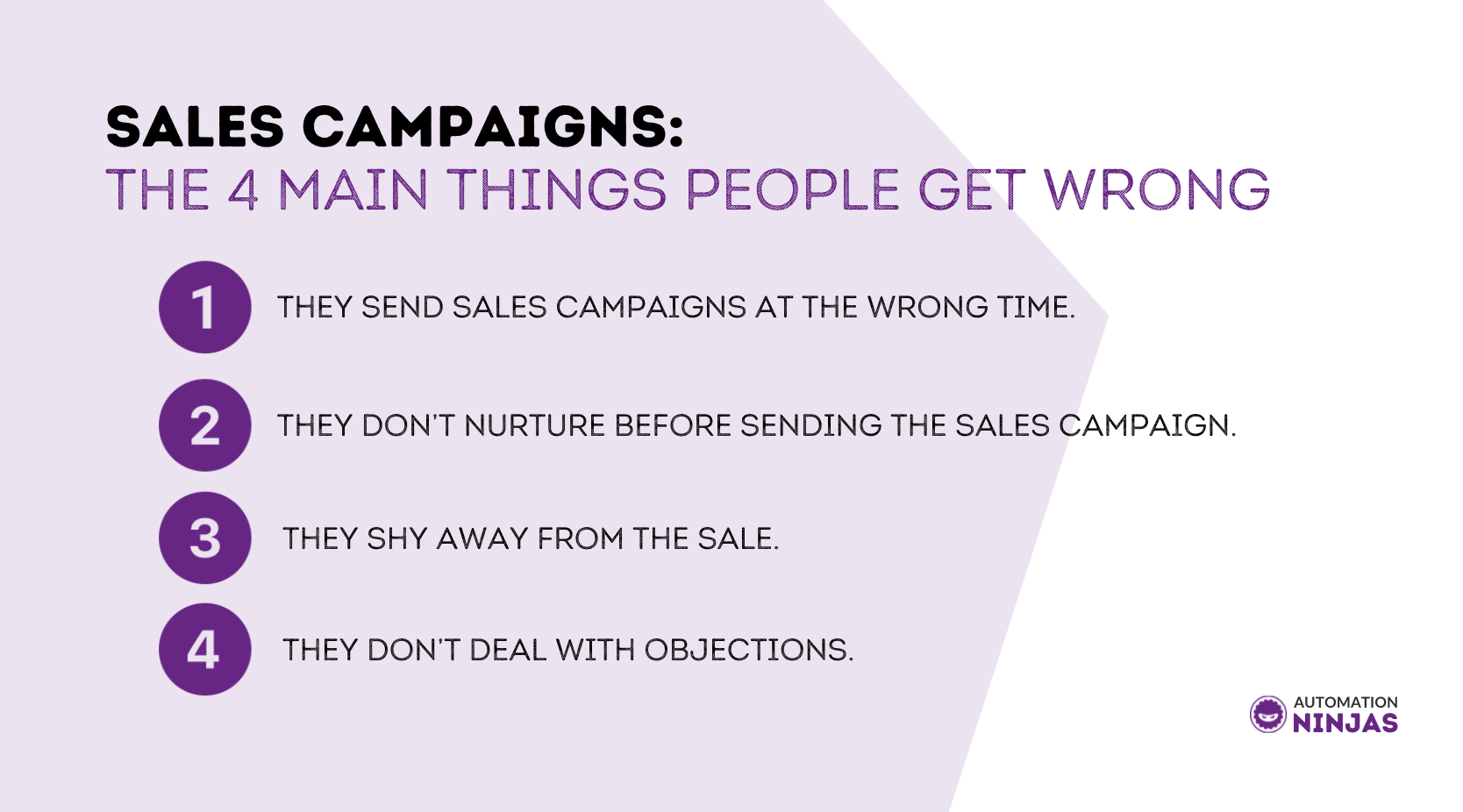
As you can see you might not actually be doing anything wrong per se. You might just not be getting the timing right.
So, let’s look at these in a little more detail...
1. Sending Sales Campaigns at the Wrong Time...
Would you propose on the first date?
If the answer is no (which I kind of hope it is), then you shouldn’t be trying to sell on the first (virtual) meeting either.
One of the main problems that we see is that sales campaigns are being sent too soon after a person enters a mailing list.
You might be aware that there are five stages of awareness before a customer makes a purchase.
Awareness stages - with an example:
1. Unaware
A prospect doesn’t know they have a want or need for your solution. They might be suffering with symptoms of a need they are yet to determine, but know something isn't quite right. For example, you could be a dog trainer, and there are a load of prospects finding the same thing - "My dog just won't come back on recall... So, I'm finding it increasingly hard to let him/her off the lead."
2. Problem Aware
A light bulb has just lit up. The prospect now knows the reason their dog isn't reacting to recall - it needs more training. They are problem aware. Now they have deduced the problem is lack of training, they are going to research how they can overcome it. In this instance it's likely, they will take to searching the web and asking others. There's a variety of ways to search for an answer to a problem, but we know Google is one of the most prominent in today's world.
3. Solution Aware
The prospect has conducted lots of research, looking at all the different options to train their dog on recall. They are aware there are lots of solutions, so they now need to decide what's the right fit for their wants/needs/goals etc. From here they create a criteria and start comparing options to match it. This could be video tutorials, the need for tools (whistle), or perhaps a professional to train the dog for them.
4. Product Aware
Now they have figured out the most suitable product for their requirements (in this case professional training), they just need to decide which provider they want to go with. They'll have another set of specific criteria, this could be features, benefits, cost and availability for example. They will probably compare like for like, read reviews, look at specific solution related content, then make their decision.
5. Most Aware
The prospect is at the bottom of the sales funnel. They have made their decision that this is the right option. It matches their criteria, they're confident it's the best choice - thanks to the information they have so far consumed. They want it, need it and are prepared to buy it.
Why your sales campaigns should be based on awareness:
Mapping out the awareness journey is a powerful exercise that will help you understand exactly what your audience needs at each stage in the process, and how you can help them along the way.
Imagine that you have a lead, who is only just in the problem aware stage of the journey and recently downloaded your lead magnet.
And BAM! You hit them with a sales campaign.
Are they ready to buy?
Probably not!
And you waving your solution in their face and telling them to buy it now probably isn’t going to be enough to push them towards the sale, and may very likely turn them off.

How to get your sales campaign right...
Step one is to figure out what stage of awareness you're going to target. Ideally, you don't want to be pushing sales to too early an awareness stage. You're better off nurturing these people with high value, information content to educate them and help them move to the next stage. We'll talk more about nurture in a minute...
Next, you need to know what they are interested in. List segmentation is a huge part of getting this data for you. If you have an email list and a marketing automation platform - you should be segmenting based on behaviour to progressively profile your audience.
Related content: Progressive Profiling: Behavioural Segmentation From Customer Behaviour
Once you know where they are in the stages of awareness you can make sure that you deploy the sales campaign at the right point. If you don’t work alongside your lead awareness stages then the sales campaigns will be met with crickets.
And, you need to be promoting something that is of relevance to their wants/needs/interests. If you're tracking clicks with segmentation, you'll know what they are most interested in. Plus, you'll be able to identify who from your list is most likely open to your solution, based on their engagement levels.
It's a mighty combination!
Related content: 6 common mistakes you are making with your marketing automation.
2. Not Doing Nurture Before Sending Sales Campaigns...
Did you know that 80% of new leads never translate into sales?
If you are going straight for the sale, it’s likely that you are not taking the time to nurture your leads.
You’ve done so much hard work to get the lead. They’ve opted in or enquired about a service and they are ready and primed to be contacted, educated and nurtured. Nicely done!
But then - you go straight in for the hard sell.
Yikes!
Not only will your leads lose interest, but they’ll lose their trust in you because you went in for the sale early.
Poor follow up and engagement are extremely common mistakes. Great marketing engagement and a successful sales campaign are all about engaging with the leads that you gather.
How to do sales campaigns right...
Nurture is so incredibly important.
Automated lead nurturing emails get 4-10 times the response rate compared to standalone email blasts and are likely to make 47% larger purchases than non-nurtured leads.
Following up with your leads will help to educate, delight and most importantly build trust with them. This means that when you go in for the sale your leads will be ready.
You can find out more about our follow-up campaigns here, we’ll help you set up the right follow up campaigns at the right time so that your sales campaigns work when you implement them.
Related content: Everything you need to know about our follow-up campaign
3. Shying Away From The Sale...
I know I know, it’s scary to ask for a sale. After all, the last thing you want to do is come across as a sleazy salesperson.

So it’s common for people not to ask for the sale.
And guess what?... They don’t get it.
You can build trust as much as you want, but if you don’t let your leads know what service or product you offer and give them the option to purchase it then they won’t.
How to do sales campaigns right...
Remember the people that you are emailing are interested in your product or service. If you’ve done things right (a.k.a the steps one and two) then you’ve built up a relationship with them and they will want to purchase from you.
You offer a solution to their problem. They want to fix it, and you can help them to do that.
We recommend that you ask for the sale strategically and consistently. Don’t just ask once and hope for the best. Be strategic, set up your automated sales campaign to allow them the opportunity to buy.
4. Not Dealing With Objections Properly...
If you just bury your head in the sand the problem will go away, right?
Sadly not.
We see loads of people just pretending that problems don’t exist.
Can we let you in on a secret?
Your customers already know about the problems. And by ignoring them, you are diminishing any trust that you have built with them in your follow-up campaigns.

How to do sales campaigns right...
Our number one tip is to meet the potential problems and objections that your potential customers may have head-on.
Throughout the nurture and sales campaigns, you should talk about things that might go wrong, or that people might worry about.
They exist - deal with it.
Plus, major bonus points, the competitors in your industry probably won’t be talking about the problems. So it builds trust with your potential customers. And trust is everything in business.
Ready to nail your sales campaigns?
Your sales campaigns are an essential part of your marketing automation journey and are an extremely important component for driving your sales.
Go forth and create sales based on awareness, segmentation, objection busting - and following on from some amazing nurture specific content 🙂
If you are looking for some help then we can provide it. Sometimes you just need to get something off the ground with a little expertise backing it. So let us help create and set up your sales campaigns. We’ll make sure you’re doing it amazingly, and that they are triggering off at the right time for your audience.

